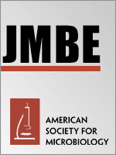
Journal of Microbiology & Biology Education
Scope & Guideline
Exploring the Frontiers of Microbiology and Biology Education
Introduction
Aims and Scopes
- Innovative Teaching Strategies:
The journal emphasizes the development and dissemination of innovative teaching methods, including active learning, cooperative learning, and inquiry-based learning, which enhance student understanding and engagement in microbiology and biology. - Research-Based Education:
It promotes the integration of research experiences into the curriculum, particularly through Course-Based Undergraduate Research Experiences (CUREs) that allow students to engage in authentic scientific inquiry. - Interdisciplinary Approaches:
The journal explores interdisciplinary connections in biology education, linking microbiology with other fields such as environmental science, public health, and bioinformatics to enrich the educational experience. - Diversity and Inclusion:
There is a strong focus on diversity, equity, and inclusion within biology education, addressing the need for pedagogical strategies that support underrepresented groups and foster inclusive learning environments. - Student-Centered Learning:
The journal advocates for student-centered pedagogies that prioritize student engagement, agency, and active participation in the learning process, aiming to cultivate scientific literacy and critical thinking skills.
Trending and Emerging
- Course-Based Undergraduate Research Experiences (CUREs):
CUREs are increasingly highlighted as transformative educational experiences, allowing students to engage in authentic research while developing critical scientific skills and fostering a sense of belonging in the scientific community. - Integration of Technology in Education:
The use of technology, including virtual labs, online simulations, and digital learning tools, is becoming more prevalent, reflecting a shift towards blended and online learning environments that enhance student engagement. - Focus on Scientific Literacy:
There is a growing emphasis on developing scientific literacy among students, equipping them with the skills to critically engage with scientific information and participate in public discourse on science-related issues. - Mental Health and Wellness in STEM:
Recent publications show an increasing focus on mental health and wellness initiatives in STEM education, recognizing the importance of supporting students' well-being in challenging academic environments. - Community Engagement and Service Learning:
Research is increasingly addressing the role of community engagement and service-learning in biology education, highlighting how these experiences can enhance student learning and foster connections between science and society.
Declining or Waning
- Traditional Assessment Methods:
There appears to be a decreasing emphasis on traditional assessment methods, such as standardized testing, as more innovative and formative assessment practices gain traction in the journal's publications. - Basic Laboratory Techniques:
Papers focusing solely on basic laboratory techniques without integration into broader educational frameworks or research experiences are becoming less frequent, indicating a possible shift towards more complex, inquiry-based approaches. - Isolation of Microorganisms:
Research centered on the isolation and identification of microorganisms for educational purposes is waning in favor of more interdisciplinary and applied research topics that connect microbiology to real-world issues. - Lecture-Centric Teaching:
There is a noticeable decline in papers advocating for lecture-centric teaching methods, as the focus shifts towards interactive and participatory learning experiences that engage students actively.
Similar Journals
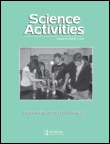
Science Activities-Projects and Curriculum Ideas in STEM Classrooms
Catalyzing Change: Innovative Strategies for STEM ClassroomsScience Activities-Projects and Curriculum Ideas in STEM Classrooms is a distinguished journal published by Routledge Journals, Taylor & Francis Ltd, prominently addressing the critical need for innovative teaching methodologies in the realms of Science, Technology, Engineering, and Mathematics (STEM). With an ISSN of 0036-8121 and an E-ISSN of 1940-1302, this journal serves as a vital resource for educators, researchers, and curriculum developers who are dedicated to enhancing STEM education through practical activities and project-based learning. Although it is not an open access publication, it offers invaluable insights that foster engagement and deepen understanding of STEM concepts in classroom environments. By publishing diverse articles that blend theory with practice, Science Activities aims to inspire educators to implement engaging curriculum ideas that not only promote scientific literacy but also cater to diverse learning styles. This journal is an essential companion for anyone invested in shaping the future of STEM education, providing a platform for exchanging innovative ideas and strategies that can be directly applied in the classroom.

TEACHING OF PSYCHOLOGY
Empowering Educators with Research-Driven InsightsTEACHING OF PSYCHOLOGY is a distinguished academic journal published by SAGE Publications Ltd, focusing on the field of psychology education. Established in 1975, this journal has carved out a vital niche in the academic landscape, facilitating the dissemination of innovative teaching practices, research outcomes, and pedagogical strategies that enhance the learning experience in psychology. With an impressive H-index indicating its influence, TEACHING OF PSYCHOLOGY is ranked in the second quartile for Education and third quartile for Psychology (Miscellaneous) in 2023, reflecting its pivotal role in these fields. The journal boasts a robust Scopus ranking, placing it within the 55th percentile for Social Sciences - Education and the 42nd percentile for General Psychology, demonstrating its relevance and reach among scholars and practitioners alike. Although it does not offer open access, it remains a crucial resource for educators, researchers, and students seeking to enhance their understanding and application of psychological principles in educational settings. By contributing to the ongoing dialogue about effective teaching methodologies in psychology, the journal aims to inspire and inform educators, fostering an environment of rigorous academic inquiry and practical application.

Journal of Science Education and Technology
Bridging Science and Technology for Enhanced Learning.The Journal of Science Education and Technology, published by SPRINGER, stands as a premier platform in the fields of education and engineering, recognized with a prestigious Q1 ranking in both categories as of 2023. With an ISSN of 1059-0145 and an E-ISSN of 1573-1839, this journal serves as a pivotal resource for researchers, educators, and practitioners alike, emphasizing the integration of scientific inquiry and technological advancements in educational contexts. Since its inception in 1992, the journal has consistently provided high-quality, peer-reviewed research that shapes contemporary practices and methodologies in science education. With its notable Scopus rankings, including a 95th percentile in Social Sciences Education, the journal is essential for anyone eager to enhance their understanding of effective teaching in STEM fields. While the journal is not open access, its contributions are invaluable to advancing knowledge and innovations that are crucial for the progressive education landscape, making it a must-read for scholars and students committed to excellence in science education.

Turkish Journal of Education
Connecting Ideas, Inspiring Change in EducationTurkish Journal of Education, published by MEHMET TEKEREK, is a prominent Open Access journal dedicated to advancing the field of education research since its establishment in 2012. With an ISSN of 2147-2858, this journal exemplifies a commitment to disseminating high-quality research that addresses contemporary issues and innovative practices in education. It serves as a vital resource for researchers, educators, and policymakers interested in the educational landscape of Turkey and beyond. The journal promotes accessibility to knowledge by offering free access to its articles, fostering a collaborative and inclusive academic environment. By engaging with a diverse range of topics, from pedagogical theories to educational technology, the Turkish Journal of Education strives to contribute significantly to the field and stimulate scholarly debate among its readers.

International Journal of Education in Mathematics Science and Technology
Exploring new horizons in mathematics, science, and technology education.The International Journal of Education in Mathematics Science and Technology (ISSN: 2147-611X, E-ISSN: 2147-611X) is an esteemed publication dedicated to advancing knowledge and research in the fields of mathematics, science, and technology education. Published by Necmettin Erbakan University in Turkey, this journal serves as a vital platform for educators, researchers, and professionals to disseminate innovative methodologies, pedagogical strategies, and educational technologies. With a commendable Q2 ranking in both the Education and Mathematics categories for the year 2022, it clearly exemplifies its impact in these domains, boasting a Scopus rank of #19 out of 74 in Mathematics (miscellaneous) and a position in the 75th percentile. Although the journal has transitioned into open access, it remains committed to fostering a rich dialogue among scholars and practitioners dedicated to enhancing educational outcomes in mathematics and science. Researchers and educators interested in contributing to pedagogical advancements are encouraged to submit their work, thereby playing a part in influencing the future of education.
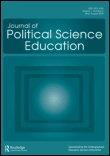
Journal of Political Science Education
Exploring New Frontiers in Political EducationThe Journal of Political Science Education is a distinguished peer-reviewed journal published by Routledge Journals, Taylor & Francis Ltd, based in the United Kingdom. Since its inception in 2005, this journal has been dedicated to advancing research and discourse at the intersection of political science and education, offering insightful analyses and innovative pedagogical practices to enhance the teaching and learning of political science. As a reputable journal in the field, it is currently indexed in the Scopus database, holding a prestigious position within the top quartiles (Q2) in both Education and Sociology and Political Science categories. The journal aims to foster a vibrant scholarly community, encouraging contributions that promote critical thinking and engagement in political issues among students and educators alike. With an emphasis on accessibility and impact, the Journal of Political Science Education serves as a vital resource for researchers, educators, and practitioners seeking to enhance their understanding of the educational frameworks that shape political science knowledge and civic engagement.

MEDICAL TEACHER
Elevating standards in medical teaching and learning.MEDICAL TEACHER, published by Taylor & Francis Ltd, is an esteemed journal in the fields of Education and Medicine, recognized for its pivotal role in advancing medical education. With an impressive impact factor, this journal has consistently secured a top-tier position, being classified in Q1 for both Education and Miscellaneous Medicine as of 2023. Established in 1979, it offers a platform for innovative research, critical reviews, and insightful discussions that inform and influence pedagogical practices in medical training globally. Researchers and professionals can benefit from the journal’s comprehensive coverage, which includes empirical research, theoretical discussions, and educational strategies aimed at improving the quality of medical education. As a renowned resource for educators, clinicians, and policymakers, MEDICAL TEACHER continues to shape the future of healthcare education, making it an essential reading for anyone involved in the medical training landscape.
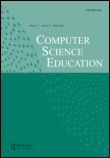
Computer Science Education
Transforming Learning Outcomes in the Digital AgeComputer Science Education is a prestigious journal published by ROUTLEDGE JOURNALS, TAYLOR & FRANCIS LTD, focusing on the critical intersection of computer science and educational practices. Established in 1988, this journal has become a cornerstone for researchers, educators, and practitioners interested in enhancing teaching methodologies and learning outcomes in computer science. With an impressive ranking within the top quartile (Q1) in both Computer Science (miscellaneous) and Education categories for 2023, as well as high Scopus percentile placements, it underscores its significance in advancing the discipline. The journal offers a platform for innovative research encompassing diverse educational environments and approaches, and while it currently does not offer open access options, it remains committed to disseminating high-quality scholarly work. As a vital resource for anyone looking to contribute to and understand the evolving landscape of computer science education, Computer Science Education continues to shape the future of learning in this dynamic field.
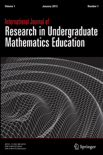
International Journal of Research in Undergraduate Mathematics Education
Innovating Teaching Strategies in Mathematics EducationInternational Journal of Research in Undergraduate Mathematics Education is a premier peer-reviewed journal published by Springer International Publishing AG, dedicated to the advancement of research and scholarship in the field of undergraduate mathematics education. With an ISSN of 2198-9745 and an E-ISSN of 2198-9753, this journal serves as a crucial platform for educators, researchers, and policymakers to disseminate innovative findings and pedagogical strategies that enhance mathematical understanding among undergraduates. Positioned in the esteemed Q2 ranking in both the Education and Mathematics (miscellaneous) categories for 2023, it boasts a respectable Scopus ranking—17th out of 90 in Mathematics and 578th out of 1543 in Social Sciences (Education), placing it in the top percentiles of both fields. The open access format ensures that research is widely accessible, fostering collaboration and knowledge-sharing across the global academic community. Since its inception in 2016, the journal has been committed to publishing high-quality research addressing various dimensions of mathematics education, making it an essential resource for those engaged in enhancing educational practices and outcomes.

Journal of Baltic Science Education
Advancing Science Education Across the Baltic RegionThe Journal of Baltic Science Education, with ISSN 1648-3898, is a leading academic journal published by the SCI METHODICAL CENTRE - SCI EDUCOLOGICA in Lithuania. This esteemed journal, established in 2008, has gained recognition within the educational sector, boasting a notable impact factor that places it in the Q2 category for the year 2023, highlighting its significance in advancing educational research. With Scopus rankings reflecting a commendable placement at #659 out of 1543 in the Education category, the journal serves as a vital platform for disseminating knowledge and fostering discourse among researchers, professionals, and students in the field of science education across the Baltic region and beyond. The journal’s objectives include promoting innovative educational practices, sharing empirical research findings, and contributing to the development of effective science teaching methodologies, ensuring that it remains at the forefront of academic inquiry in education.